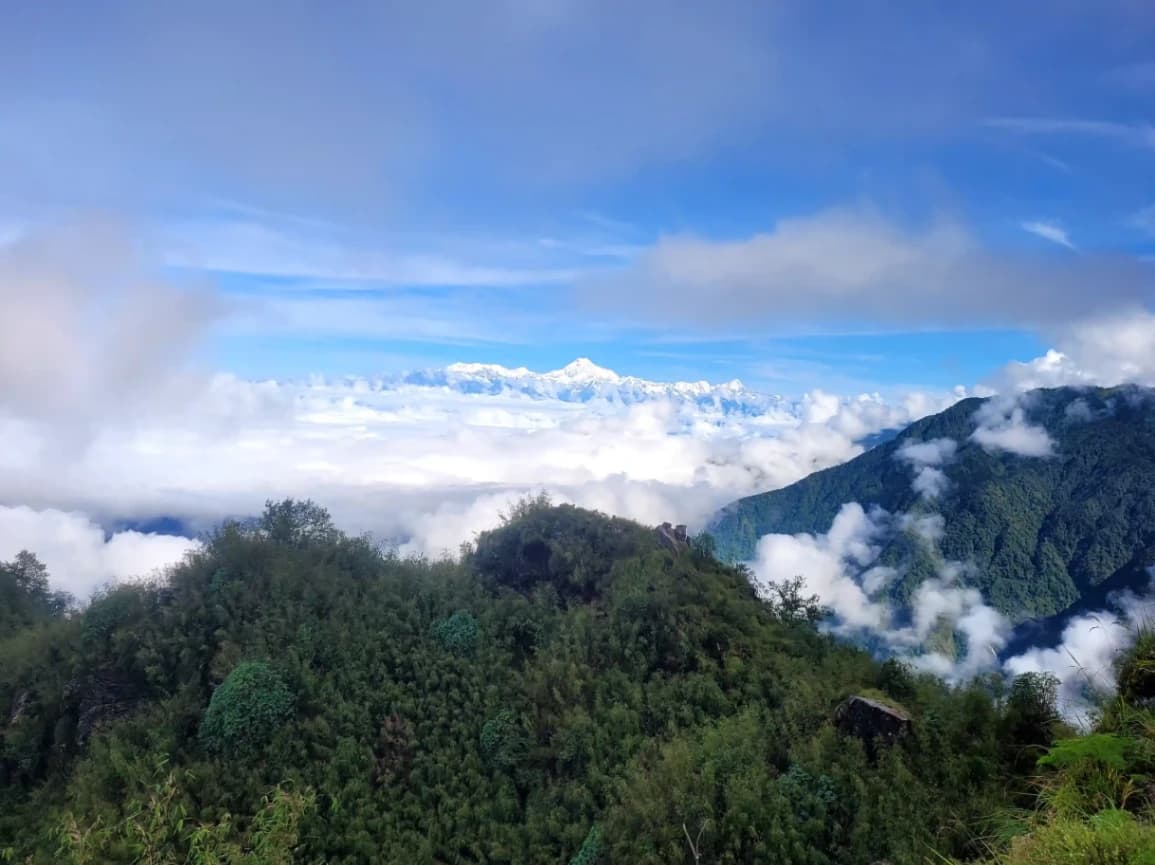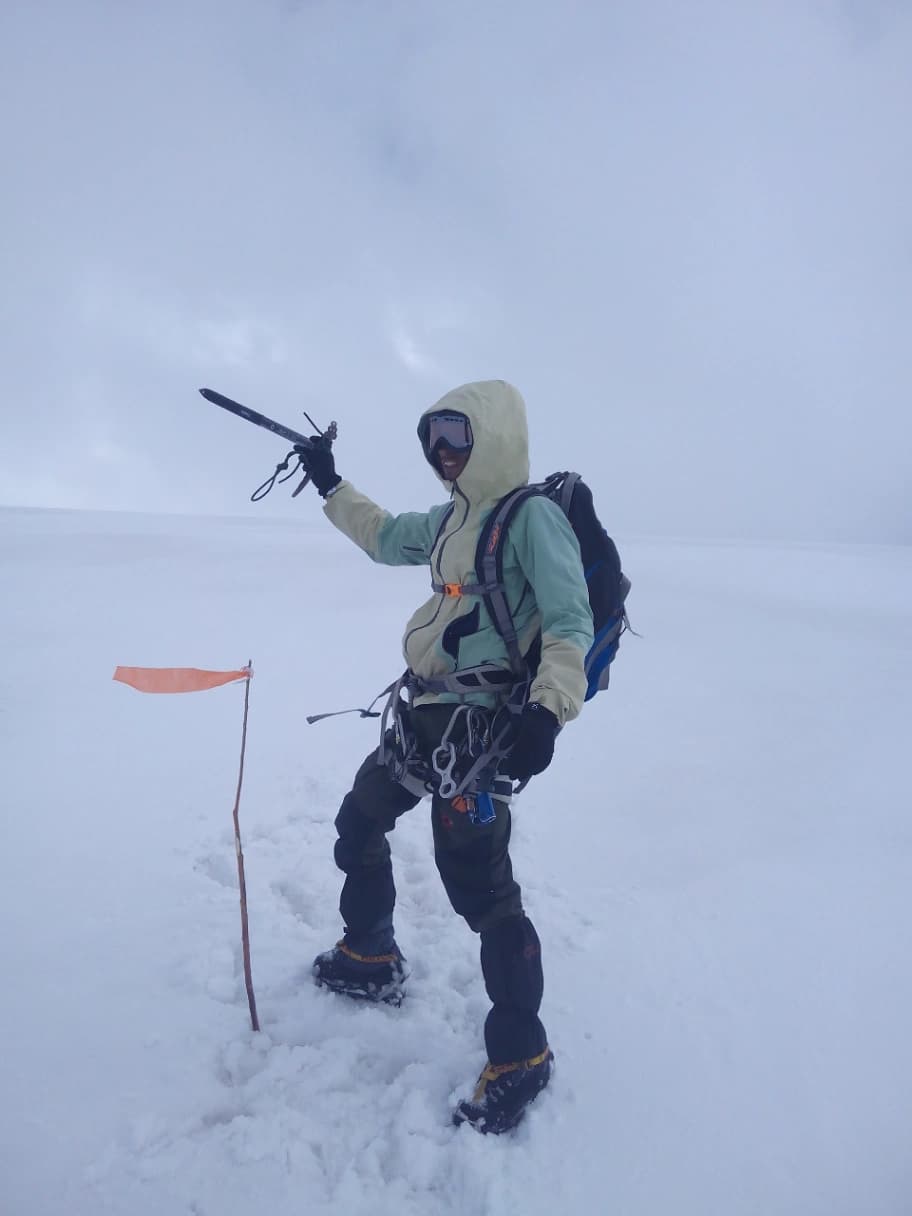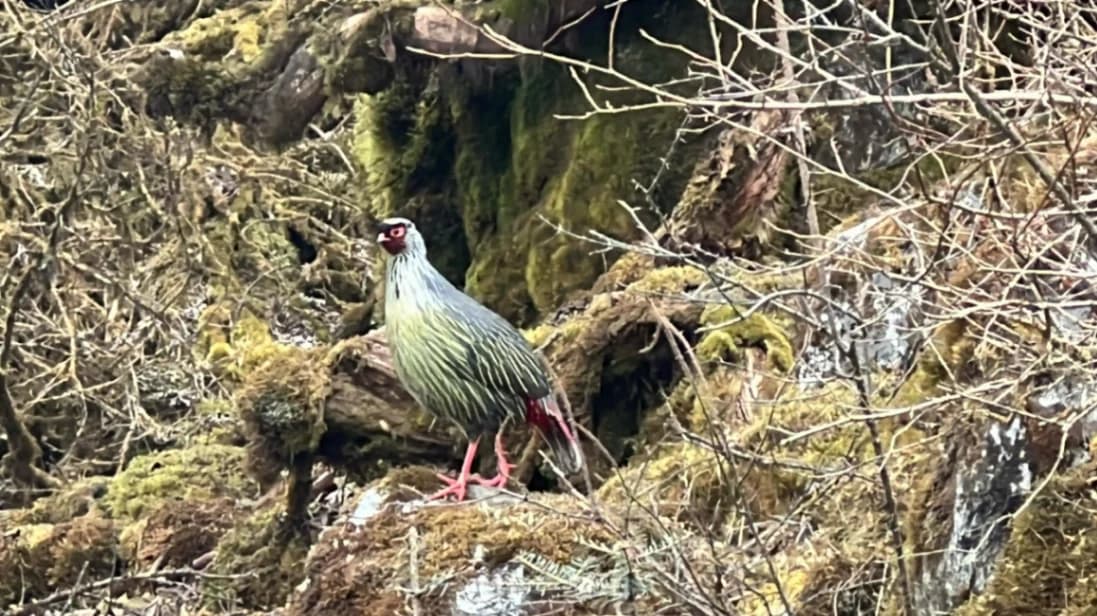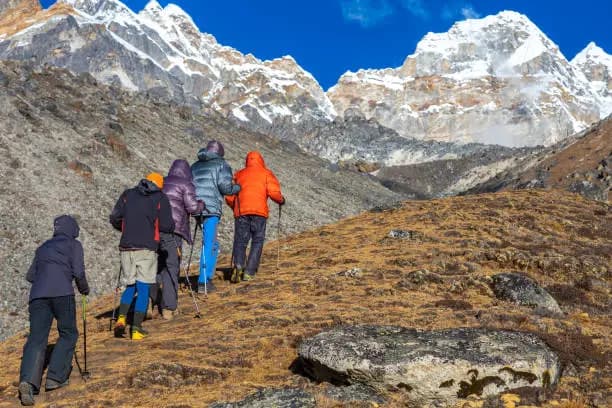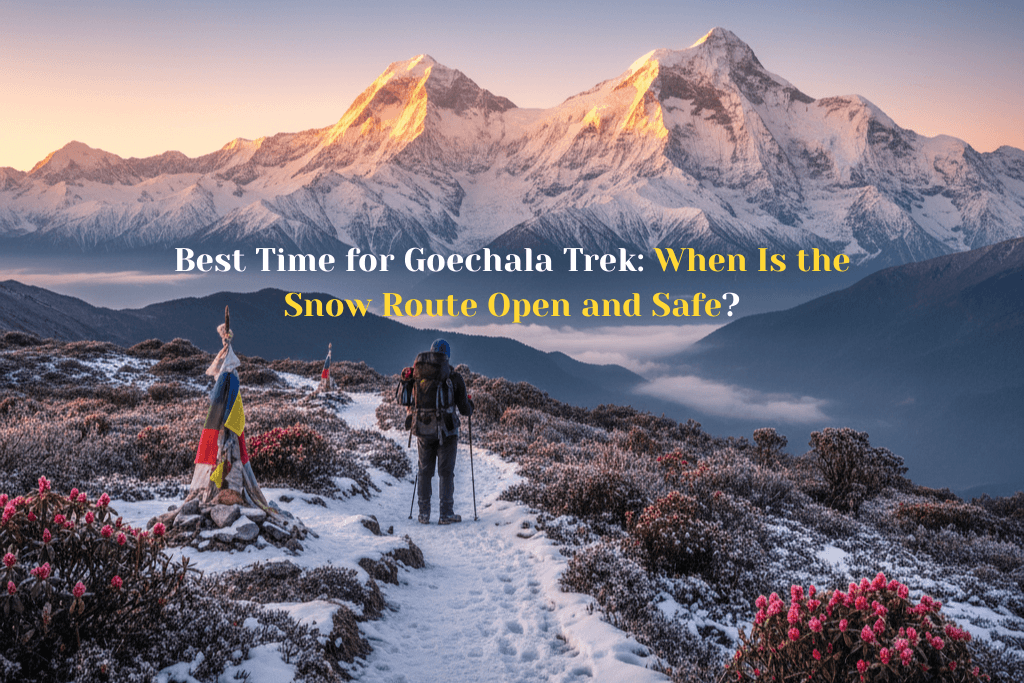Dzongri Goechala Trek is one of the most adventurous treks in the Himalayas. It has incredible views of the range of Kanchenjunga.
This legendary trek is a place every nature enthusiast and adventure seeker should visit. It is the epitome of experiencing the beauty of mountains.
The route runs through varied landscapes. There is the greenery of the forests and the harsh terrain. It all leads to the sweeping views from the Goechala viewpoint.
Trekkers are in for a thrilling adventure. They will soak in the natural splendour and tranquillity of the wilderness in the Himalayas.
Overview of the Goechala Trek
The Goechala trek is one of the most popular options among those looking for an exciting Himalayan adventure. It is in Sikkim, India. It is one that merges beautiful natural scenery, rich culture, and varied wildlife.
Location and Geography
It is located in the Sikkim Himalayas, close to the protected area of Kanchenjunga National Park, one of the UNESCO World Heritage Sites. It passes through dense forest, villages, and tough terrain. This provides a variety of landscapes and biodiversity.
Trek Difficulty Level
The Goechala trek is moderate and demanding. It has uneven trails, river crossings, and altitudes. Trekkers need to be fit and prepared to tackle the physical demands of the trek.
Duration and Distance
This is an 8-day trek covering about 70 kilometers and begins in Yuksom and continues through Dzongri and Thansing and concludes at Goechala viewpoint.
Best Time to Visit Goechala
Knowing when to go on the Goechala trek is key for a great trip. The trek’s success depends a lot on the weather. The weather changes a lot throughout the year.
Pre-monsoon Season (April-May)
The best times to trek Goechala are in April and May. The weather is usually calm, with clear skies. This lets you see the Kanchenjunga and other peaks clearly. The temperatures are also mild, perfect for walking.
Post-monsoon Season (September-November)
September to November is also a good time for the trek. By September, the monsoon rains stop, making the landscape green. The weather is calm and clear, giving you great views of the mountains.
Weather Conditions Throughout the Year
The weather on the Goechala trek changes a lot with the seasons.
-
Winter (December to March) brings heavy snowfall and extreme cold.
-
The pre-monsoon season (April-May) offers stable weather with clear skies.
-
The monsoon season (June to August) is characterized by heavy rainfall, making the trails slippery and prone to landslides.
-
The post-monsoon season (September-November) provides calm and clear weather.
Physical Preparation for the Goechala Trek
To conquer the Goechala trek, you need to focus on your physical shape and getting used to the high altitude. The trek is tough and requires a solid fitness level to handle its rugged terrain.
Fitness Requirements
Having a strong heart is key for the Goechala trek. Start by doing running, cycling, or swimming for 30 minutes, three times a week. Also, add strength training to your routine. This includes squats, lunges, and leg press to build leg strength.
Altitude Acclimatization
Getting used to high altitudes is vital to avoid Acute Mountain Sickness (AMS). Climb slowly, letting your body adjust to the altitude. Make sure to include rest days in your plan to help your body adapt.
Training Schedule Recommendations
Start a training plan 2-3 months before the trek. It should include:
-
Cardiovascular training (3 times a week)
-
Strength training (2 times a week)
-
Flexibility and stretching exercises
-
Rest and recovery days
Also, practice walking with a heavy backpack to get used to the trek’s conditions.
Complete Goechala Trek Route Map and Trail Details
Starting the Goechala trek means knowing the route and trail well. It’s a journey through the Himalayas with amazing views and varied landscapes.
Starting Point: Yuksom
The trek starts in Yuksom, a historic town in Sikkim. Yuksom is the trek’s gateway, with all the necessary amenities for travelers. It’s a small town rich in culture, perfect for beginning your adventure.
Major Checkpoints
The Sandakphu trek has key stops like Tshoka, Dzongri, and Thansing. These spots are important for getting used to the high altitude and seeing beautiful mountains. Trekkers can rest and get supplies here, making the trek easier.
Elevation Profile
The trek’s elevation is a big factor. It reaches its highest at Dzongri Top, with views of Kanchenjunga. Knowing the elevation helps prepare for the trek’s physical challenges.
Alternative Routes
There are alternative routes to the Goechala trek. These paths offer solitude or unique views, perfect for those wanting something different from the main trail.
Detailed Day-by-Day Goechala Trek Itinerary
The Goechala trek is a journey of natural beauty and culture. It spans several days to help trekkers adjust to high altitudes. This allows them to fully enjoy the stunning scenery.
Day1: Yuksom to Sachen
The trek starts in Yuksom, a historic town. The trail to Sachen is 6 km long, with a gentle climb.
Distance and Elevation Gain
The trek from Yuksom to Sachen is 6 km. It goes from 1,780 meters to 2,160 meters in elevation.
Trail Highlights
The trail goes through dense forests. It offers views of the mountains. Trekkers can enjoy the peaceful surroundings and local plants.
Day2: Sachen to Tshoka
The next day, you trek from Sachen to Tshoka, a 8 km journey. The trail goes through lush forests, with a moderate climb.
Distance and Elevation Gain
The trek is about 8 km long. It goes from 2,160 meters to 3,010 meters in elevation.
Trail Highlights
The trail shows off stunning views of peaks and valleys. Tshoka is a key stop with basic amenities for trekkers.
Day3: Tshoka to Dzongri
The trek from Tshoka to Dzongri is 7 km long. It involves a big climb. The trail gets rougher as it goes up.
Distance and Elevation Gain
The trek is around 7 km long. It goes from 3,010 meters to 4,030 meters in elevation.
Trail Highlights
Dzongri offers amazing views of the Kanchenjunga range. The area becomes more barren and alpine, with fewer trees.
Day4: Dzongri to Dzongri Top and Back
This day is for reaching Dzongri Top. It’s a spot with incredible views of the Himalayas.
Distance and Elevation Gain
The round trip is about 4 km. It goes from 4,030 meters to 4,400 meters and back.
Trail Highlights
The views from Dzongri Top are breathtaking. You can see Kanchenjunga and other peaks clearly.
Day5: Dzongri to Thansing
The descent from Dzongri to Thansing is 4 km long. Then, there’s a gentle climb.
Distance and Elevation Gain
The total distance is about 6 km. It goes from 4,030 meters to 3,860 meters (Thansing’s elevation).
Trail Highlights
Thansing is surrounded by beautiful views. It’s a great place for camping.
Day6: Thansing to Lamuney
The trail from Thansing to Lamuney is short, about 4 km. It has a moderate climb.
Distance and Elevation Gain
The distance is about 4 km. It goes from 3,860 meters to 4,100 meters (Lamuney’s elevation).
Trail Highlights
Lamuney has stunning views of the landscape. It’s a less crowded campsite.
Day7: Lamuney to Goechala and Back to Kokchurang
This day involves a tough climb to Goechala. Then, you descend to Kokchurang.
Distance and Elevation Gain
The total distance for the day is about 10 km. There are big elevation changes.
Trail Highlights
Goechala offers spectacular views of Kanchenjunga. The descent to Kokchurang is steep and requires careful navigation.
Day8: Kokchurang to Tshoka
The final day is retracing steps back to Tshoka.
Distance and Elevation Gain
The distance is about 9 km. There’s a significant descent.
Trail Highlights
The return journey lets you reflect on your trek. The landscape looks different on the way back.
Permits and Documentation for Goechala Trek
Before starting the Goechala trek, knowing the permit rules is key. The trek is in the Kanchenjunga National Park. This area needs special documents.
Kanchenjunga National Park Permit
The Kanchenjunga National Park Permit is a must for all trekkers. It’s needed because the trek is in the national park. This park is full of life and stunning views.
The permit keeps track of how many people are trekking in Sikkim, Kanchenjunga. It also makes sure the trek doesn’t damage the environment.
Restricted Area Permit
Another permit, the Restricted Area Permit, is also needed. This is because the trek goes through restricted areas. These areas are close to international borders.
Where to Obtain Permits
Permits can be gotten from registered trekking agencies in Sikkim. These agencies check your details before giving out permits. Choosing a well-known agency makes getting permits easier.
Essential Packing List for Goechala Trek
To have a safe and fun Goechala trek, you need to pack the right things. The trek is tough and the weather can change quickly. So, being ready is very important.
Clothing and Footwear
Choosing the right clothes and shoes is key for the trek. You’ll need base layers that wick away moisture, mid-layers for warmth, and outer layers to keep you dry. Your shoes should be sturdy and waterproof. Don’t forget a warm hat and gloves.
-
Moisture-wicking base layers
-
Insulating mid-layers
-
Waterproof outer layers
-
Sturdy, waterproof trekking boots
-
Warm hat and gloves
Trekking Gear
Along with your clothes, you’ll need trekking gear. Trekking poles help with balance, a good backpack is essential, and a sleeping bag for cold nights. If your agency doesn’t provide a tent, bring one.
-
Trekking poles for stability
-
A reliable backpack
-
Sleeping bag rated for sub-zero temperatures
-
Tent (if not provided by the trekking agency)
Medical Supplies
A first-aid kit is a must-have. It should have bandages, antiseptic wipes, pain relievers, and medicine for altitude sickness.
-
Bandages and band-aids
-
Antiseptic wipes and ointment
-
Pain relievers and antihistamines
-
Altitude sickness medication
Miscellaneous Items
Don’t forget to pack water purification tablets or a filter, a light source, sun protection, and personal hygiene items.
-
Water purification tablets or filter
-
Headlamp or flashlight
-
Sun protection (sunscreen, sunglasses)
-
Personal hygiene items
Safety Tips and Emergency Procedures on the Goechala Trek Route
Safety is key on the Goechala trek. Knowing the risks is important for a safe journey. These risks include high altitude, unpredictable weather, and remote areas.
Altitude Sickness Prevention and Treatment
Altitude sickness is a big risk at high elevations. Prevention includes climbing slowly, staying hydrated, and watching your body. If you start to feel sick, rest, drink water, and might need to go down.
It’s important to catch symptoms early, like headaches and nausea. Then, act fast.
Weather-Related Hazards
The trek faces weather dangers like snowstorms, landslides, and cold. Carry the right gear and check the weather forecast. Knowing when the weather is about to change helps you stay safe.
Emergency Contacts and Evacuation Plans
Having emergency contacts and a plan is critical. Carry a list of emergency numbers, like local guides and rescue services. Knowing how to get help quickly is important.
Being aware of these risks and taking steps to avoid them makes the trek safer. This way, you can enjoy the Goechala trek more.
-
Stay informed about weather forecasts
-
Recognize early symptoms of altitude sickness
-
Have a clear evacuation plan
Accommodation and Food Options on the Goechala Trek
Accommodation and food are key parts of the Goechala trek. Trekkers should know what to expect for lodging and dining along the way.
Trekking Huts and Campsites
The Goechala trek has trekking huts and campsites. These offer basic places to stay. They are run by local operators and have shared rooms with simple amenities.
Food Availability
Food is available along the trek, with local tea houses and lodges. They serve traditional Nepali dishes. Trekkers can find dal bhat, noodles, and soups among other options.
Water Sources
There are natural water sources along the trek, like streams and rivers. But, it’s wise to purify or filter the water. This helps avoid water-borne illnesses.
Highlights and Attractions of the Goechala Trek
The Goechala trek is known for its stunning views and diverse attractions. It’s a favorite among trekkers and nature lovers. The trek combines natural beauty, cultural experiences, and adventure.
Kanchenjunga Views
The trek is famous for its views of Kanchenjunga, the third-highest mountain. Trekkers see panoramic views of this peak from different spots along the trail.
Samiti Lake
Samiti Lake is a highlight of the trek. It’s a serene, high-altitude lake. The lake’s calm surroundings are perfect for relaxation and reflection.
Rhododendron Forests
The trek goes through vibrant rhododendron forests. These forests are a treat in spring when the flowers bloom. They add color to the landscape and delight nature lovers.
Wildlife Sightings
The Goechala trek is also known for wildlife sightings. Trekkers might see red pandas, Himalayan tahrs, and various pheasants.
Conclusion: Making the Most of Your Goechala Trek Experience
The Goechala trek route is a breathtaking journey. It offers stunning views of the Kanchenjunga mountain range. When planning your trip, prepare well. This includes getting necessary permits and packing essential gear.
To enjoy your experience, focus on acclimatizing to the high altitude. Stay hydrated and be mindful of your surroundings. The trek’s scenic beauty, including rhododendron forests and Samiti Lake, makes it unforgettable.
Follow the detailed itinerary and be prepared for challenges. This ensures a safe and enjoyable journey along the Goechala trek route. With its natural beauty and cultural significance, this trek leaves a lasting impression.
FAQ
What is the best time to undertake the Goechala trek?
The best times for the Goechala trek are April-May and September-November. During these periods, the weather is clearer, giving you stunning views of Kanchenjunga.
What is the difficulty level of the Goechala trek?
The trek is moderately difficult. It has steep climbs, high altitudes, and unpredictable weather. You need to be physically fit and ready for the challenges.
What permits are required for the Goechala trek?
You’ll need a Kanchenjunga National Park Permit and a Restricted Area Permit. These can be gotten through a registered trekking agency.
What is the total distance and duration of the Goechala trek?
The trek covers about 70 km. It usually takes 8 days, depending on your pace and the route.
What are the accommodation options available on the Goechala trek?
You can stay in trekking huts and campsites. They offer basic amenities. It’s wise to bring a tent and camping gear too.
What are the essential items to pack for the Goechala trek?
Pack warm clothes, sturdy shoes, trekking gear, and medical supplies. Don’t forget a water bottle, headlamp, and snacks.
How can I prevent altitude sickness on the Goechala trek?
To avoid altitude sickness, ascend slowly, drink plenty of water, and rest when needed. It’s also good to talk to a doctor before starting.
What are the highlights of the Goechala trek?
The trek offers amazing views of Kanchenjunga, Samiti Lake, and rhododendron forests. You might also see wildlife, making it a memorable journey.
What is the goechala trek route?
The trek begins in Yuksom and goes through Sachen, Tshoka, Dzongri, Thansing, and Lamuney. It ends at Goechala.





